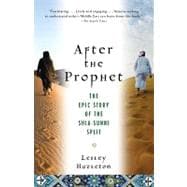Narrative history at its most compelling, After the Prophet relates the dramatic tragic story at the heart of the ongoing rivalry between Shia and Sunni Islam. Even as Muhammad lay dying, the battle over his successor had begun. Pitting the family of his favorite wife, the controversial Aisha, against supporters of his son-in-law, the philosopher-warrior Ali, the struggle would reach its breaking point fifty years later in Iraq, when soldiers of the first Sunni dynasty massacred seventy-two warriors led by Muhammad's grandson Hussein at Karbala. Hussein's agonizing ordeal at Karbala was soon to become the Passion story at the core of Shia Islam.
Hazleton's vivid, gripping prose provides extraordinary insight into the origins of the world's most volatile blend of politics and religion. Balancing past and present, she shows how these seventh-century events are as alive in Middle Eastern hearts and minds today as though they had just happened, shaping modern headlines from Iran's Islamic Revolution to the civil war in Iraq. After the Prophet is narrative nonfiction at its finest, and an emotional and political revelation for Western readers.
“Thrilling in its depiction of long-ago events. . . . Passionately and scrupulously done.”-The Wall Street Journal
“As sectarian aggression flares in Iraq, Hazleton’s explanation of its deep, entrenched roots is essential.”-Christian Science Monitor
“A remarkable and respectful telling of the story of Islam—a tale of power, intrigue, rivalry, jealousy, assassination, manipulation, greed, and faith that would have made Machiavelli shudder (had he read it), but above all it is a very human story, told in a wonderfully novelistic style that puts most other, often dreary, explanations of the Shia-Sunni divide to shame.”-Hooman Majd, author of The Ayatollah Begs to Differ








